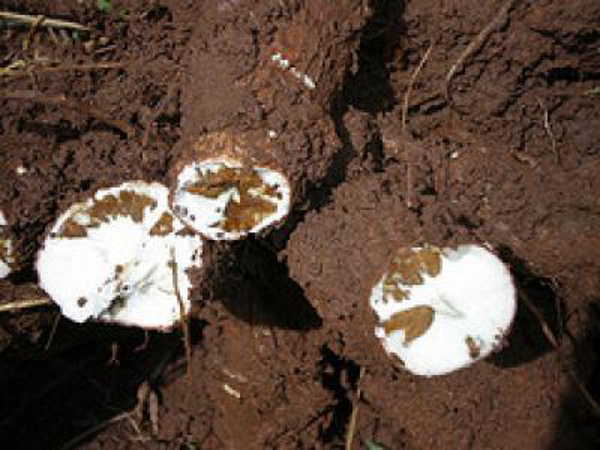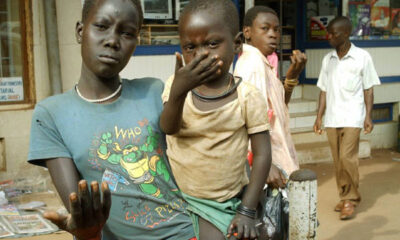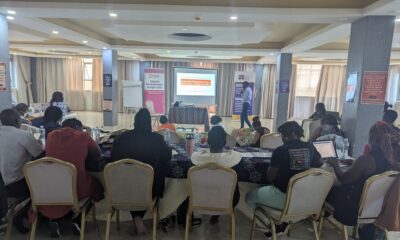News Feature
How Busoga is escaping the poverty-trap of sugarcane growing
“Farmers are now earning good money per truck of harvested cane. They’re building new brick and iron-roofed houses replacing grass-thatched huts. They are buying food from fellow crop-farmers,”
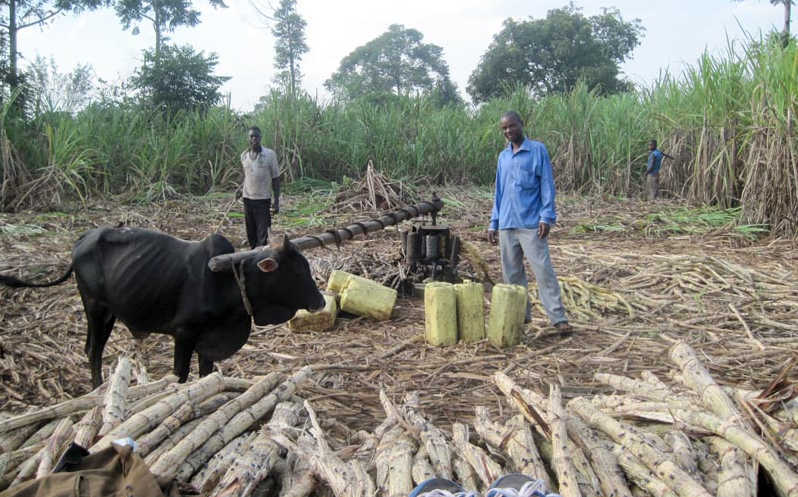
This picture, taken in 2009, shows one David Isabirye, a farmer in Kamuli district trying to add value to cane by producing jaggery due to low prices of cane at factories. Until recently, sugarcane growing had remained largely a poverty trap for majority in the region. But things are beginning to change. Photo by Henry Lutaaya
Uganda’s local entrepreneurial spirit to develop a self-sustaining economy for survival and livelihood of the nation as envisioned by President Yoweri Museveni, shall be boosted by conducive legal frameworks like the recently-enacted Sugar Act (2019).
Community-based initiatives as the Busoga rural smallholder sugarcane-growing and industrialization enterprise, that was getting threatened by unfriendly legal and business environments, now stands to benefit from the Government’s new regulatory dispensation.
According to legal expert, Tucker Mugogo, Busoga region’s estimated annual UGX 693bn (about US$ 256m) worth [turnover] from the community sugar industry, has been incentivized with the removal of the original 25 km-radius zoning off, of one miller from another that was crippling what had been planned to grow into a regionally-decentralized sugarcane-growing and value-addition business.
“Now that zoning was removed from the new Sugar Act, exploitation of farmers through dictating the price by millers-on-cane-delivery and offering prices based on only cane’s worth in terms of only the sugar it will give, which have been disincentives, are also removed,” he said.
Mugogo—one of the brains behind the farmer-friendly law—told this writer in a recent exclusive interview, that during the pre-Sugar Act period, farmers had been reduced to slaves.
“Prior to that law coming into force [this year], farmers had no say in the prices and were paid as low as UGX85,000. This has slightly improved to UGX110,000 per ton,” he says.
The new law which was signed by President Museveni in April this year, provides for a Sugar Board to among other roles, regulate the price per ton. Previously, millers would disregard the immense value-chains in sugarcane like jaggery, bagasse [from which by-products like biogas, alcohol/ethanol, bioethanol, methane, electricity, liquified petroleum gas (LPG)], animal feeds, fertilizers e.t.c], are all produced.
Under the new legal framework, Busoga sugarcane farmers like others elsewhere in Uganda, shall be paid a price determined by the board and also receive a percentage off the various value-chains-millers benefit from on the cane delivered,” says Mugogo.
For close to a century, Uganda’s sugar industry has been dominated by two giant players: Madhvani Sugar of Kakira and the Lugazi-based Sugar Corporation of Uganda Limited (SCOUL) located in Buikwe District, in which the lead is the Mehta Group, with Government shareholding. Additionally, there has been the Masindi-based and Government-owned, Kinyara Sugar Works Limited set up in 1970s.
Today, smallholder community-based cane-growing business initiatives in Busoga have sprouted over the past five years, plus the Atiak Sugar Factory Limited (ASFL) owned by Somali-Ugandan business woman Amina Muhammed. SHe Atiak sugar factory has been at the centre of many controversies for receiving unprecedented government support in terms of cash as well as support to acquire land from the people.
Back to Busga, Mugogo reveals that the new law has incentivized Basoga cane-farmers—who previously were grouped in associations—to start on a region-wide mobilization for a Union.
“Up to 60% union-registration work has been done. This registration is with the Commissioner for Cooperatives at the Ministry of Trade, Industry and Cooperatives. Our sugarcane business is viable, and the Busoga Sugar Union stands to start with over 210,000 acres currently under cane by smallholder community plantations. This is worth 6.3million tons of cane annually.
Today, a ton of freshly harvested cane goes for UGX 110,000 on delivery at the factory but Mugogo says that with the proposed regional union taking root, there is potential to produce increase output to 630,000 metric tons of processed sugar from the current level of 510,000 metric tones and thereby increase export potential as the country is only able to consume about 350,000 tones annually.
Besides, he adds, Busoga Sugar Union plans to engage in the wide range of high-value products including jaggery, bagasse [from which by-products like biogas, alcohol/ethanol, bio-ethanol, methane, electricity, liquefied petroleum gas (LPG) are made], plus animal feeds and fertilizers.
“According to our business plan, our union will be a strong competitor with traditional giant sugar companies, that had promoted a disintegrated and disunited farmer-base, in order to exploit it.
Not anymore,” Mugogo vows. He revealed that frustrated cane-farmers had begun to abandon sugarcane, when the Bill introduced in Parliament in 2018, was going through a ping-pong game.
“It originally had unfriendly sections of zoning where farmers and millers were being suppressed not to do what best worked for them. That Bill was proposing to make our cane-farming unprofitable. So farmers were even slashing down their plantations.” We’ve embarked on a sensitization campaign to carry on cane-growing as the legal environment has improved, says a happier Mugogo.
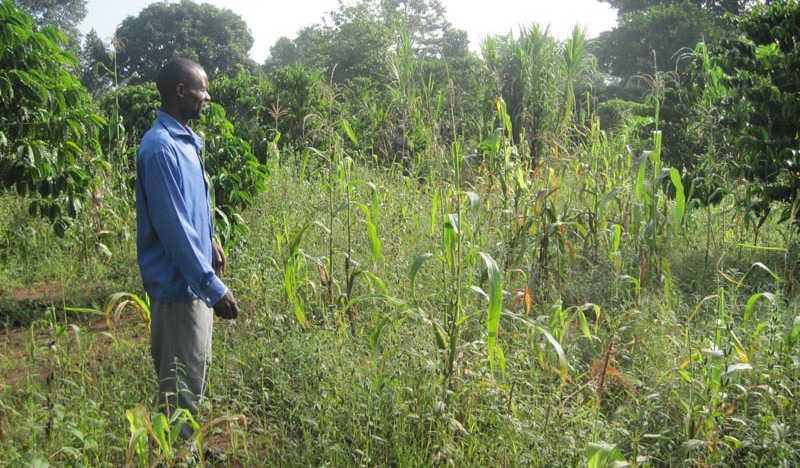
Miserable maize field: After years of consistently poor yields from food crop farming, many farmers like Isabirye in Kamuli, have abandoned food growing and embraced sugarcane farming as a path out of poverty. Photo by Henry Lutaaya
A leading Agricultural Journalist and entrepreneur, Patrick Luganda, confirms that as a cane farmer, he had recently lost interest in his 17-acre plantation when there was a generally low public morale to continue with cane-growing, when hopes of a supportive, conducive law were fading.
“Infact, most farmers have over the last decade been frustrated with local content initiatives to develop small-scale enterprises that would be the foundations or pillars for building a robust “economy-for-survival-and-livelihood” of the nation.
Luganda, a veteran journalist who worked at the State-owned The New Vision and currently a Director of the UN-supported Ecosystem-Based Adaptation for Food Security in Africa (EBAFOSA)—in a wide-ranging interview with this writer—observed that a typical example of the frustration of local content is how government has failed to support the growth and development of the rural sugarcane small-scale industry initiated by the local people themselves evident in Busoga.
“Instead,” he adds, “some Government officials cater for the interests of the big monopolistic companies that have existed for over a century but fear other players [competition] in an industry of our country.”
The media consultant and trainer, who is CEO of the Africa Farmers’ Media Centre based in Mukono, says a fast-growing cane-industry had taken root in Busoga region out of local community initiative.
“But this has been systematically frustrated. I was assigned by the Nairobi-based Inter-Governmental Authority on Development (IGAD) Climate Prediction & Applications Centre (ICPAC) to research on the impacts on the environment and climate by the rapidly-spreading sugarcane-growing in Busoga. During this assignment, I discovered that while the sugarcane-growing threatened food-growing, it introduced a new community-owned rural economic-empowerment enterprise that offered a previously poverty-ridden region, an opportunity to get out of this deeply-rooted poverty, by the people themselves.
I witnessed a rapidly-ending peasantry and this was an admirable people-driven courageous development-initiative. But this doesn’t seem to please some people. They had to fight it,” Luganda—who is also a mixed farmer of poultry and crops—adds that he witnessed real change among former peasants, whose lives used to rotate around growing little gardens of sweet potatoes, cassava and maize.
“They are now earning good money per truck of harvested cane and from their proceeds, they’re building new brick and iron-roofed houses replacing grass-thatched huts. They are buying food from fellow crop-farmers. They are investing their new incomes in small-scale trade businesses. I was hugely impressed,” he reveals.
He right away got attracted to engaging in the same sugarcane growing business. “I bought 20 acres of land and invested in the opening up land by tractor, employed workers to do second fine-ploughing. After purchase of cane-seed, I engaged the same labour to plant 17 acres. My plantation went through all the costly weeding and weeding; and all the necessary good husbandry practices.” As it matures, the Busoga Sugar Union is shaping up where Luganda has the opportunity to market his cane.
Lawyer Mugogo agrees: “Under the union, we’re encouraging cane farmers to market their produce to the miller nearest them, so that they don’t incur the high cost of transportation. Cane is a bulky and highly-perishable product, therefore our union is designed on Sub-county-based primary cooperative societies within the existing administrative Subcounties, as the union’s grassroots pillars/foundations for quick absorption of cane,” says Mugogo.
He adds that at sub-county level, the Union-affiliated sugar millers shall buy cane from the Primary Cooperative Society-registered member-farmers. These millers, Mugogo explains, shall process the cane into the large variety of products. Some of the millers currently in Busoga and neighbouring Buikwe, that shall work with the Sugar Union, include Mayuge Sugar, Kaliro Sugar, Kamuli Sugar and GM Sugar.
Luganda reveals that his young sugarcane plantation is blossoming vigorously and promises to fetch him a good return on investment, a situation similar with other smallholder cane farmers in almost all Busoga’s districts of: Iganga, Jinja, Mayuge, Kamuli, Kaliro, Namutumba, Bugiri, Buyende, Namayingo, Luuka and Busiki.
On May 1 [Labour] Day, President Yoweri Museveni outlined what he called critical values of an economy he has been building on: survival and livelihood, not based on the values of leisure and luxury.
Patrick Luganda says the community-led sugarcane industry in Busoga that has rapidly spread throughout the region in a few years, assures wananchi of survival and a livelihood. “We now require a systematic institutionalized promotion and protection of this local content spirit via policies, laws, programmes and funding that should be adopted by the Government.
“Uganda should nurture and support this local entrepreneurship, that involves largely the youth. This is a typical local content and community investments,” a highly optimistic Luganda said.
Comments



